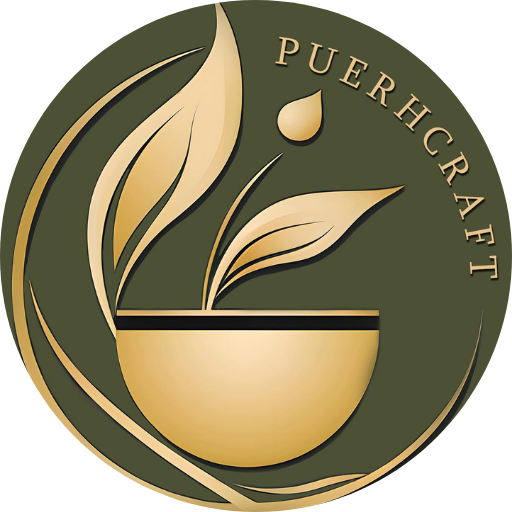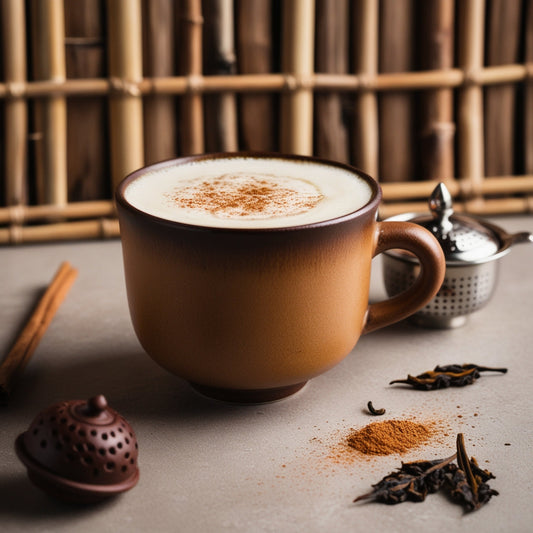Overview
In this article we will dig into the interesting heritage of Pu-erh tea, a favorite among health-conscious individuals. Pu-erh tea originated as the "hungry leaf" and now it is one of the finest tea available.
Pu-erh's story is as fascinating as it is flavorful. Join us as we explore the ancient traditions of Chinese tea culture as well as uncover the secrets behind Pu-erh's global recognition.
Additionally, we'll discuss the fascinating history of Pu-erh tea, from its humble beginnings to its esteemed reputation today. We'll dig into its origins in the ancient Pu'er Prefecture and learn about the meticulous process of crafting this special tea.
Are you ready to sip this historical brew while discovering its remarkable journey and why it's cherished by people worldwide?
Table Of Content
- Introduction
-
The history of Pu-erh dynasties
- Interesting stories of Pu-erh tea
- The ancient tea mountains
- Conclusion
Introduction
The history of Pu-erh tea in China goes long back, taking us to the times of the legendary Emperor Shennong. Among the many types of tea, Pu-erh stands out for its unique flavor and rich heritage.
Originating from Yunnan province, Pu-erh tea leaves has captivated people's taste buds and imaginations for centuries. The traditions and legends have transformed this amazing tea into beloved tea it is today..
In this guide, We’ll also explore the six ancient tea mountains where Pu-erh tea is grown, each with its own unique character and history. From Youle to Mansa, we'll discover the secrets hidden within these legendary tea gardens.
So let’s explore this journey through the attractive world of Pu-erh tea. Together, we'll sip, savor, and unravel the mysteries of this cherished fermented brew.

The History of Pu-erh Tea Dynasties
The history of Pu-erh tea lies back from centuries. It has transformed dynasty by dynasty. Firstly, it was introduced as a herbal medicine drink and now it is consumed on a regular basis.
Here is how it has uncovered the cultural and societal influences that shaped its evolution:
Tang Dynasty (618-907 AD):
During the Tang Dynasty, tea drinking flourished as a cultural practice, with Pu-erh tea making its initial appearances. Legends recount the tale of Shen Nong, the mythical figure linked with herbal medicine, who stumbled upon the refresh properties of tea leaves by accident. This era laid the foundation for centuries of tea cultivation and consumption.
Yuan Dynasty (1271-1368 AD):
Under Mongolian rule, Pu-erh tea gained prominence as a coveted commodity in trade routes stretching to Russia and Europe. The establishment of tea-horse markets facilitated the exchange of Pu'erh tea for valuable resources, further enhancing its status.
Ming Dynasty (1368-1644 AD):
The Ming Dynasty witnessed the formal naming of Pu-erh land, marking a pivotal moment in its recognition as a distinct tea-producing region. Moreover, With the Ming era came the formalization of Pu'erh tea production and trade, paving the way for its widespread popularity in subsequent centuries.
Qing Dynasty (1644-1912 AD):
During the Qing Dynasty, Pu-erh tea reached its high point, with the establishment of Pu-erh territory and the consolidation of tea mountain jurisdictions. The vibrant tea trade and cultural exchanges fueled Pu-erh tea's reputation as a symbol of prosperity and refinement.
Interesting Stories of Pu-erh Tea
Aside from its history, Pu-erh tea is filled with interesting stories and traditions that make it even more special.
Let's explore how this healing tea becomes the major exchange and opened the new trade route for the world, from where it got introduced to the other parts of the world:
The Story of Shen Nong
According to an ancient myth, Emperor Shen Nong, known for his wisdom in herbs, discovered the wonderful benefits of tea by chance while out in nature. This magical moment sparked the beginning of Pu-erh tea, celebrated for its healing qualities and esteemed as a precious potion for well-being.
The Tea-Horse Trade of the Yuan Dynasty
During the Yuan Dynasty, Pu-erh tea played a pivotal role in the vibrant tea-horse trade, where it was exchanged for Tibetan horses along the ancient Silk Road. This trade route not only facilitated economic exchanges but also fostered cultural diffusion and exchange between regions.
The Ancient Tea Mountains
At the heart of Pu-erh tea's history are the old tea mountains, each with its unique taste. Join us as we virtually visit these special places where tea grows, learning about their land and importance to culture.
Youle Mountain:
Located in the beautiful surroundings of Jinghong City, Youle Mountain is famous for its delicate tea leaves and peaceful atmosphere. Tea lovers often visit this ideal spot to truly understand Pu-erh tea culture.
Gedeng Mountain:
With its lush greenery and fertile soil, Gedeng Mountain boasts a bounty of tea plantations that produce some of the finest Pu-erh teas. Further, the mountain's clean environment and favorable climate contribute to the exceptional quality of its tea leaves.
Jingmai Mountain:
It is one of the oldest mountain. Here, the trees are very old and the environment is perfect for making great Pu-erh tea. People from the villages pick the tea leaves by hand. They then press the leaves into cakes or bricks. The Pu-erh tea from Jingami Mountain is valued for its rich, earthy flavor. The tea gets better as it ages over many years. Collectors and tea lovers seek out vintage Pu-erh cakes from Jingami because of their quality and rarity.
The Cultural Landscape of Old Tea Forests of Jingmai Mountain in Pu-erh, Southwest China's Yunnan Province was inscribed onto the UNESCO World Heritage list in 2023 during the 45th session of the World Heritage Committee in Riyadh, Saudi Arabia, becoming the first World Heritage site for tea culture.

Conclusion
As we finish our trip through Pu-erh tea's fascinating history, I encourage tea lovers to keep exploring its amazing flavors and stories at Pu-erh Craft. From its simple beginnings to its worldwide fame, Pu-erh tea represents Chinese tea culture and Yunnan's province at its best. So, let's toast to Pu-erh tea and keep discovering its wonders together. Cheers to the journey ahead!
As you start exploration of Pu-erh tea, let every sip take you back to its long history and culture. Enjoy tasting your tea from our exclusive collection.
Q&A Section
1. What makes Pu-erh tea so unique?
- Pu-erh tea stands out for its distinctive flavor profile, which evolves over time with proper aging. It undergoes a fermentation process that gives it a rich, earthy taste and smooth texture unlike any other tea.
2. Where Is Pu-erh Tea originated from?
- Pu-erh tea originates from Yunnan province in China, specifically the ancient Pu'er Prefecture. The region's unique climate, soil, and altitude contribute to the tea's distinctive characteristics.
3. Why is Pu-erh tea so expensive ?
- Pu-erh tea is a tea which is hand picked, roasted, dried stored and finally fermented for ages to develop the flavor. The whole process makes Pu-erh unique and expensive.
4. Does Pu-erh tea have any health benefits?
- Yes, like other types of tea, Pu-erh contains antioxidants and other beneficial compounds that support overall health. Studies suggest that Pu'erh tea aid digestion, promote weight loss, and reduce cholesterol levels.
5. What role do traditions play in the world of Pu-erh tea?
- Traditions are a big part of Pu-erh tea culture, from where tea came from to how it's made and enjoyed. These stories and ways of doing things make drinking Pu-erh tea even more special.






